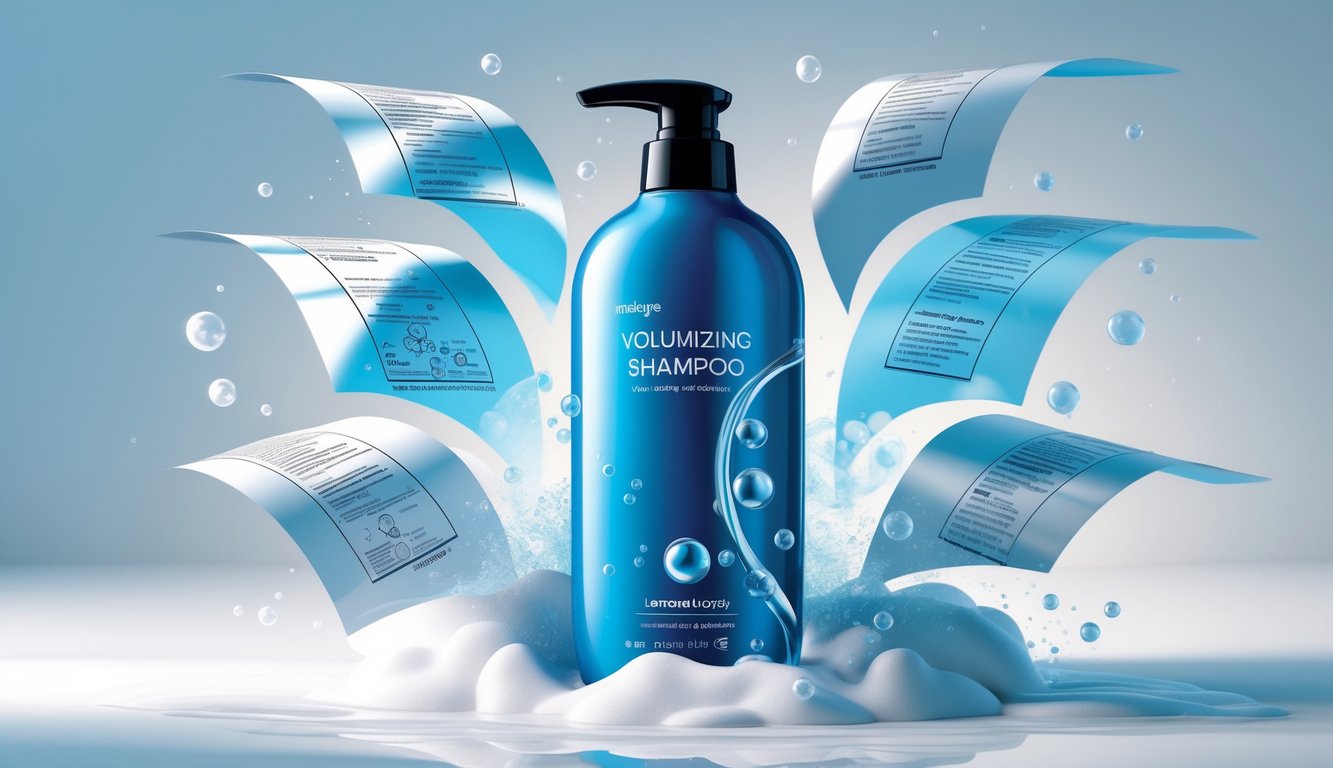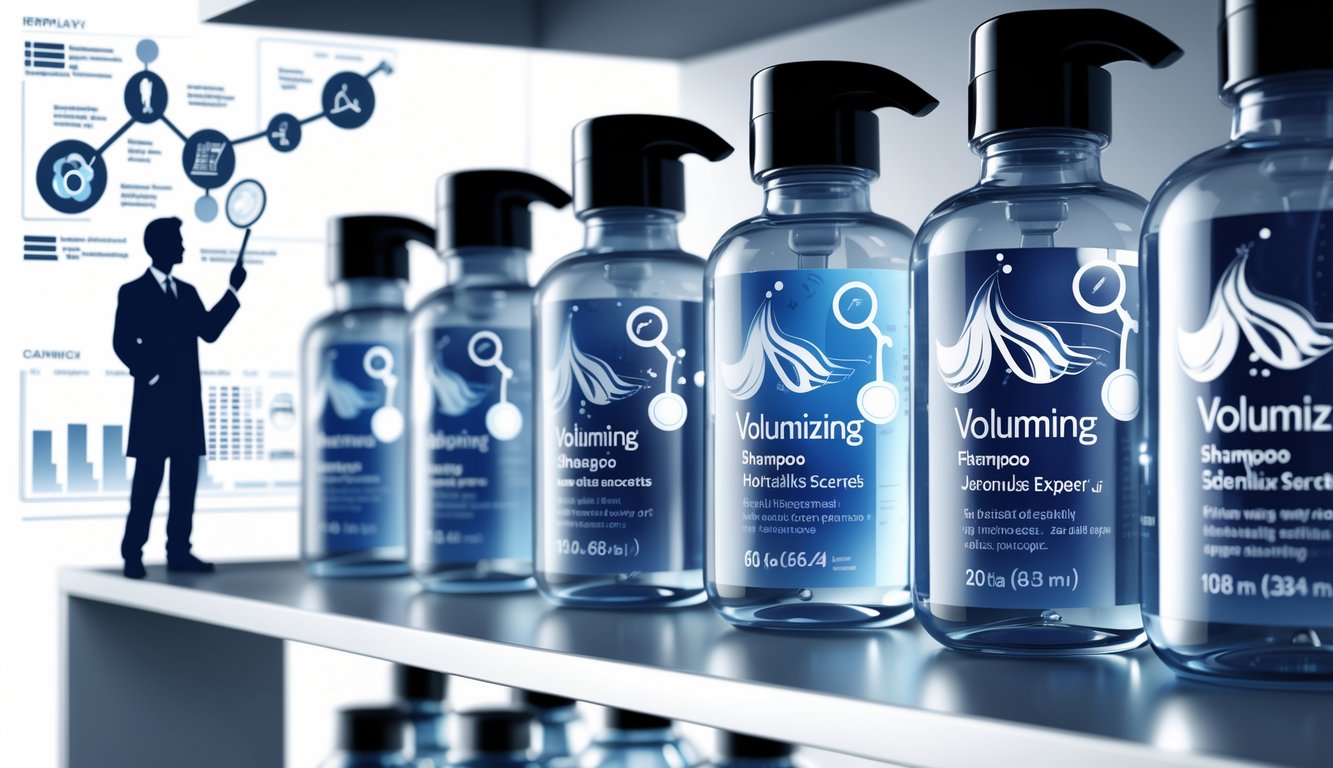Volumizing Shampoo Labels Finally Exposed by Industry Insiders
Dumped half a bottle of “volumizing” shampoo in my hand this morning—still looked like I’d licked a light socket. No bounce, no magic. Why does my hair hate me? Or, wait, is it the shampoo? Maybe both. Here’s the thing: these thickening shampoo labels are like a weird anxiety machine for anyone with pancake hair, and nobody really tells you what’s inside the bottle that’s supposed to do the trick. I remember a dermatologist muttering, “It’s not the bubbles, it’s the polymers and proteins, but you’ve gotta check which ones.” I replay that every time I see a bottle promising “instant fullness.” Which is, let’s be honest, always.
Those “adds volume instantly” stickers? I picture a bunch of lab folks bickering in a back room, arguing over which protein sounds fancier. Some formulas dump in hydrolyzed wheat protein, others hype up collagen or biotin, but, honestly, most of it feels arbitrary. I read this Good Housekeeping roundup and the ingredient lists and user reviews never line up with the hype. It’s like, why am I even bothering?
Nobody ever hands you a decoder ring for these labels. Am I supposed to be a biotin loyalist? Is collagen just a price hike? Oh, and then there’s my aunt’s friend who swears coconut milk extract is the secret, so now I’m stuck in a rabbit hole of ingredient lists instead of, I dunno, enjoying my weekend.
What’s Supposedly Special About Volumizing Shampoo?

I’ve got this image in my head: me, prying open shampoo bottles, squinting at labels, wondering if “fuller hair” means anything at all. My clients toss around “biotin” and “keratin” like they’re magic, but nobody ever brings up the pH or what actually happens if you use the wrong formula. Why is that? It’s always the stuff that’s not on the front label that matters.
Key Ingredients for Volume
Biotin—everyone’s obsessed, but unless it’s paired with something like caffeine, don’t expect miracles. I saw a study about caffeine and scalp stimulation, but, honestly, who’s checking for rice protein? I met a trichologist who rolled her eyes at wheat protein, but whispered about amaranth peptide like it’s some underground secret. Panthenol? Dermatologists love it, but unless you ask, they skip the micronized keratin talk.
Nobody ever slaps “rice protein for fine hair” on the front, but apparently, that’s what matters. Tried reading an ingredient list at 7am—nope, font’s too small. But every expert I know insists these combos matter way more than the shiny branding.
How Are Volumizing Shampoos Even Different?
Oily build-up? I swear, regular shampoos just make it worse for fine hair. I’ve washed my hair in, what, thirty salons? Volumizing formulas usually avoid heavy silicones and use lighter surfactants. Finding a bottle without dimethicone at Target? Good luck.
Supposedly, these shampoos swap out sodium lauryl sulfate for gentler stuff and tweak the pH just enough to “fluff” the cuticle. Is that real science or just marketing? I dunno, but I’ve seen product techs get weirdly specific about pH like it’s a secret handshake.
Do Hair Types Even Matter Here?
Nobody ever admits it, but volumizing shampoos can totally wreck coarse or curly hair. I said it. Too much protein, too many humectants, and suddenly you’ve got frizz or limp roots. My stylist calls it “the pillowcase effect”—mess up the formula, and it’s flat city.
Clients with oily, fine hair love biotin and panthenol blends, but folks with curly hair? They complain about dryness every time. Not every “fullness” claim is for everyone. Recommending a volumizing shampoo without seeing someone’s hair feels like roulette—just because volume shampoo is great for fine hair doesn’t mean you’ll get supermodel bounce.
What’s Actually Going On With These Labels?

I keep picking up bottles, reading the same wild promises—“root lift,” “weightless fullness”—all over shiny, sparkly packaging. The buzzwords, the “breakthrough” science, even the celebrity stylist quotes—none of it ever matches what happens on my head. Not once have I seen a label admit when “added volume” is just marketing smoke and mirrors.
Marketing Claims: Real or Just Noise?
Saw Living Proof Full Shampoo’s label—“transformative volume technology.” Sure. Most of the time, these “tricks” just mean stripping away oil, not actually making your hair thicker. MIT-backed formulas sound fancy, but the real-world difference? Maybe lighter hair, sometimes a little bounce if you’re lucky.
Celebrity stylists? I’ve talked to a few. They’ll swear by Ouai Fine Hair Shampoo for red carpet prep, but let’s be real: it’s backcombing, extensions, and lighting. “Clinically proven” claims? Usually it’s just “75% of a panel of 40 women said they felt more volume.” What does that even mean? Show me a ponytail that’s 75% fuller. Didn’t think so.
The Usual Label Tricks
“Plumping,” “biotin-enriched,” “body-boost”—I see these everywhere. R+Co Dallas Biotin Thickening Shampoo makes biotin sound like a miracle, but every trichologist I know says topical biotin doesn’t do much. Not one peer-reviewed study backs it up.
Virtue Full Shampoo? They plaster “Alpha Keratin 60ku” everywhere, but keratin molecules are too big to get into hair. I lather up, rinse, and all the “bounce” goes down the drain. My cousin tried a botanical volumizer for months—turned out it was just a strong detergent making her hair feel “lighter.” Lighter isn’t the same as fuller.
Every bottle claims “unique science” or “insider secrets,” but most of them use the same detergents and fragrances. “Root lift technology”? I found one study from eight years ago—never replicated. Why do three brands use the same catchphrase at the same time? Did they all get the same memo? I’d believe in unicorns first.



